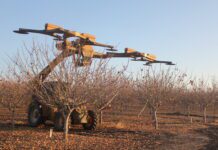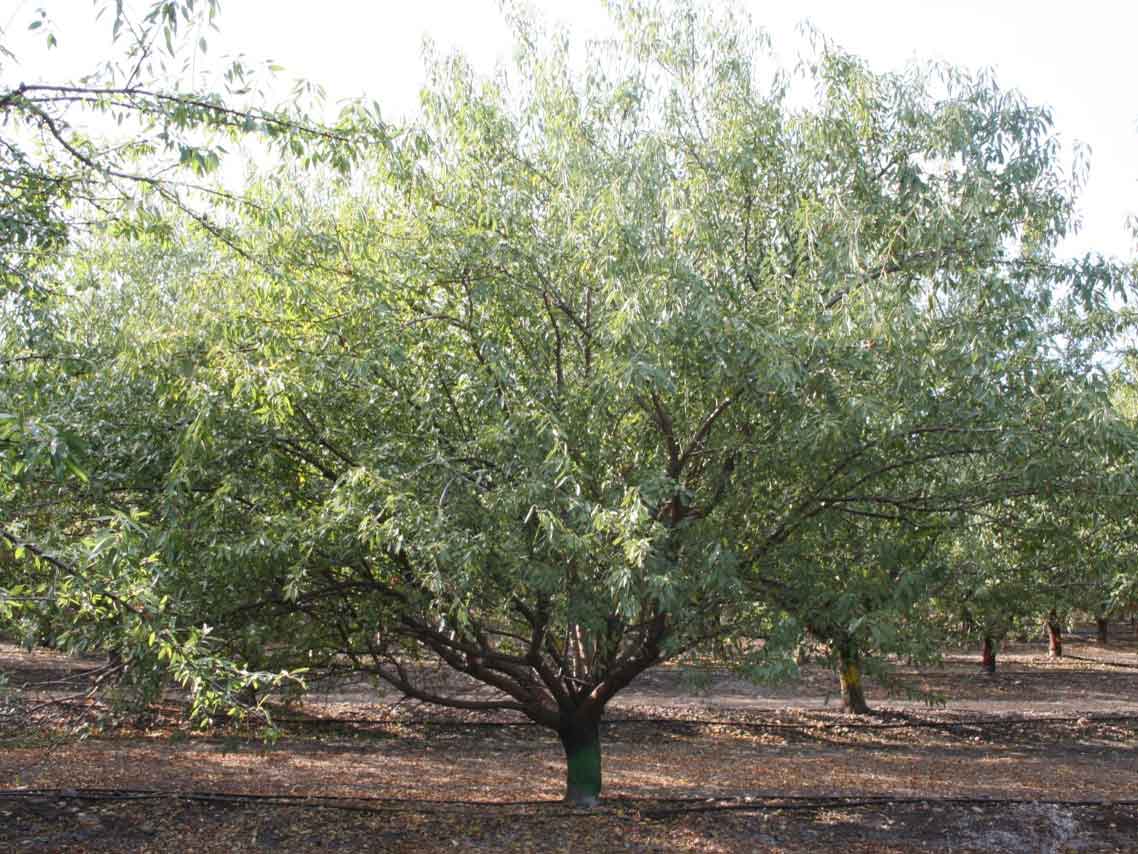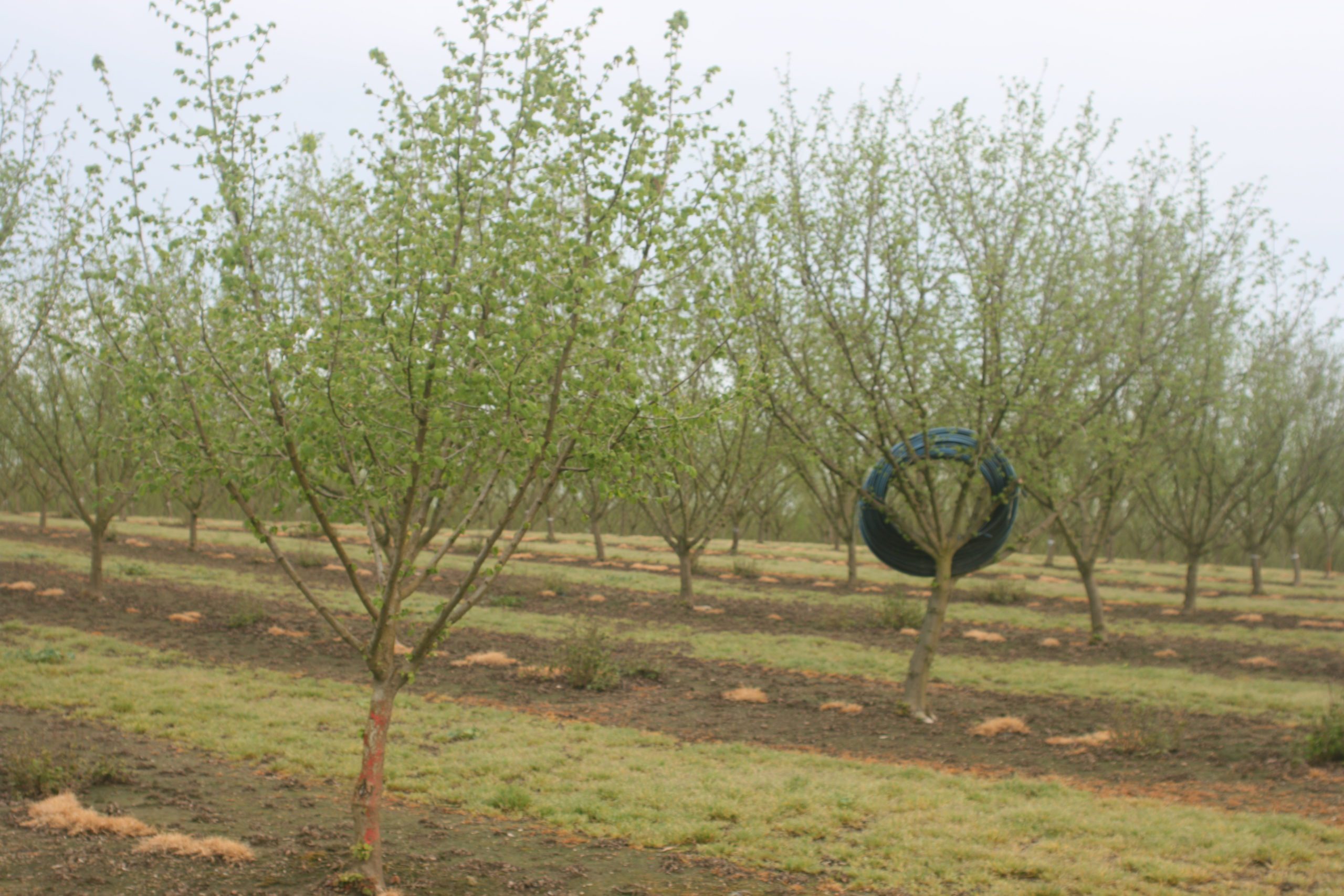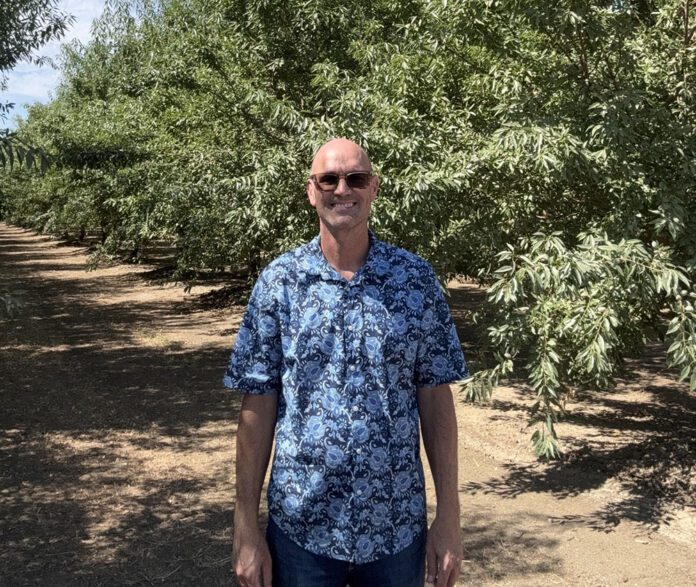
Listen to the audio version of this article. (Generated by A.I.)
Tobin Barth took a roundabout path to leading Capay Canyon Ranch, the Barth family’s almond processing company. After growing up on the family farm and learning to do farm chores from an early age, Barth thought he wanted a different life.
“Farming is where you’re at the mercy of market and Mother Nature, and I wanted nothing to do with that,” he said. “I thought that was the craziest thing to work so hard and not have much control of the outcome.”
So Barth became a civil engineer and worked in litigation consulting in San Francisco, but after nine years, he was ready for a change.
“I first traveled for a year around the States and covered about 40 states in search of ballparks and barbecue.”
After his quest for ballparks and barbecue, he and his then-girlfriend embarked on a trip around the world, visiting 14 countries. They finally landed in Jackson Hole, Wyoming, for four years before returning to California and settling in the Carmel Valley, where he worked as an assistant golf pro for the Pebble Beach Company.
“I was an assistant golf professional at Spyglass Hill Golf Course for four years,” he said. “I started making about $8.50 an hour, and I finished making about $11.25. I was 40 years old with a wife and child, and I couldn’t survive.”
Barth’s parents were ready to let someone else take over the running of the company, so Barth returned home.
“In the 20 years I was gone, they built a good business,” he said. “They were processing more almonds for more growers. It was a bigger business, a more sustainable business, and not just centered around farming. So I decided to return.”
For the past 15 years, Barth has led Capay Canyon Ranch and was recently elected to the Almond Board of California’s board of directors. He shared his story and his thoughts on the state of the almond industry with West Coast Nut.
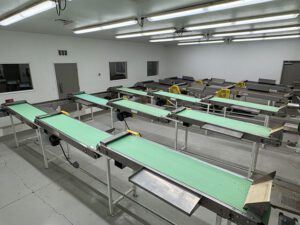
Q. Talk a little about the history of your business.
I am a fourth-generation California farmer. We were row crop farmers until the sixties when we purchased our first orchard in 1965 that had almonds and walnuts on it. Then we purchased an orchard in 1972 from David Adams of Adams Grain and Trucking.
In 1972, my dad was making $4,800 a year with a wife and three children and figured the math didn’t pencil out. So they branched off from the partnership with my grandfather and my dad’s brother. He and my mom went out on their own and started farming all the trees. They took over the mortgage of the one and then leased the other orchard from my grandfather. We used to sell to a co-op in Winters, which was being run by Ned Ryan. The co-op went belly up in 1977. Then in 1978, my parents, along with my grandfather (my grandfather had a friend in Germany) flew over to Germany and started a relationship with a candy company. And that was the genesis for the processing company, Capay Canyon Ranch.
In the beginning, we just had our own almonds to market. We had maybe 300,000 pounds, and then we started working with our first grower in 1980. Since that time, we have grown from about a million pounds to processing between 20 and 25 million pounds of almonds every year. We have close to 100 growers for whom we market their almonds. We sell mostly to export markets. We ship to about 45 different countries around the world every year, as well as the domestic market here in the States.
We formed a farming company, Trifecta Farms LLC, in 2019 when we purchased the leased land from my dad’s brothers. Advance Pasteurization Services LLC, the pasteurization business, was born and validated in 2015. So we pasteurize almonds as well.
Q. What is your role in the family business?
For the past 15 years, we’ve been transitioning all the businesses from my parents to my brother and me. I’ve taken over all my mom’s duties except for sales, and now I’m the president of Capay Canyon Ranch. My mom loves selling almonds and still does a solid portion of sales as well as a bit of production. My brother manages the plant, overseeing 35 to 55 amazing employees who work with us and always do an awesome job.
Q. What are the challenges surrounding labor in California?
Labor in California is very difficult. Our minimum wage is among the highest in the U.S. There might be employees available out there, but they’re not always good, hardworking employees. We’ve been fortunate to use our family network with our Mexican families to find people who are connected to our extended family or friends of their families.
For the last four years, we’ve taken advantage of the H-2A program, even though it’s arduous and exhausting. It has brought some really amazing employees to our ranch and helped fortify the work ethic characteristic of so many employees at our ranch.
In the office, it’s always difficult in agriculture to attract good talent because we can’t pay the highest rate. We’re constrained on how much we can pay. We have to be very competitive as a processor, and in farming, you have the market dictating prices and profits. So it’s always a challenge to get good talent in the office.
The other issue is the pay rates. The rate increases from $10 an hour in 2015 to $15 an hour in 2020 were unparalleled. Having to pay our employees that much is difficult for every farming operation. Our employees definitely deserve more money than that to raise a family and sustain themselves in California, but we are constrained by market pressures and competition with other processors. We’re always trying to keep labor as low as possible.
And there are lots of labor laws here in California. From meal breaks to rest breaks to worker safety and heat illness protection, California is a tough place to employ people. The agriculture seasonal overtime rule change really hurt farming operations and increased the price of food. Going from 6-10s and a 60-hour seasonal maximum and taking it down to 5-8s and a 40-hour work week over the last five years has been challenging. Instead of paying overtime over 60 hours a week, we’re paying overtime over 40 hours a week. When the fruits of our labor are ready to be harvested, they need harvest immediately. Mother Nature doesn’t wait. The new labor law and overtime rule really hurts farmers, farm workers and consumers.
All our Mexican employees actually wish to work more hours. They want to work 60 or more hours per week and get paid for all those hours. They don’t want to be restricted to 40 hours a week. Having 40 hours be the maximum for regular pay has been difficult for them and difficult for us.
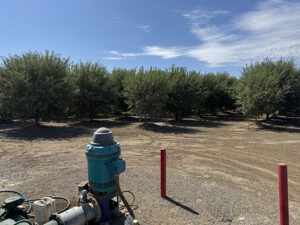
Q. How have both farming practices and processing practices evolved over the years you’ve been involved in the industry?
Farming practices have definitely evolved to be more refined, more technological, more automated. On the almond side, we are growing more on an acre with less water and less pesticides and nutrients than we ever have. Tree spacing is getting tighter. Irrigation is getting more advanced and efficient. With sustainable pest management, we’re monitoring bugs and disease more closely, so we can spray less and save money. We’re just getting more efficient all the time.
Harvesting is getting really fast. The industry has increased harvesting equipment speeds at least fourfold over the past 40 years. Sweepers are faster and better. Harvesting has advanced. Everything is being done faster, and it’s a lot more efficient and automated now.
On the processing side, in the year 2000, we were processing about 10,000 pounds an hour. Today, there are sorters that can process 60,000 pounds an hour, and the technologies for sorting have gotten quite advanced. There’s not just color sorting; there’s infrared sorting, X-ray sorting, laser density sorting.
Q. Talk a little bit about food safety, both in farming and processing.
Another big change has been in food safety. Food safety has become a big deal. It’s coming down from consumers and buyers. They want the extra level of security and food safety. They’re looking for the oversight and all the different modules and aspects of a really, really thorough food safety program in a plant. All the big corporate companies want a very high level of food safety and security, either via a BRC or SQF certification. We are starting to tackle BRC certification this year at Capay Canyon Ranch.
Regulations across the board for farming and processing have become onerous and exhausting. Every year there are new regulations and fees. There are extra layers of oversight and administration added every year.
Q. Can you speak to the disparity between retail price and the price growers get?
For the past three years, almond farmers have been receiving $1.50 to $2 per pound. During the same span of time, we’ve seen prices for almonds at least three times that in the market. It would be nice to see retailers match grower pricing a little more directly and not inflate the pricing. As beef and eggs are being inflated, almonds are also being inflated without cause and without benefit to the farmer.
As almond prices to the growers are decreasing, almonds in the markets are actually increasing. It would be nice if they mirrored each other. This, of course, is a very important issue and something we would love (everybody in the industry would love) to see addressed: accountability from our retailers.
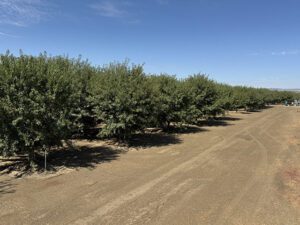
Q. Talk a little bit about the Almond Board as an asset of the California tree nut industry.
The Almond Board is very highly respected around the world. The Almond Board of California has an amazing image, amazing respect from all across the States and around the world for how they’ve conducted themselves, how we are on the cutting edge, how we are leading almost every other industry with our information, with our sustainability, with our research, with our programs, with marketing.
They’re doing an amazing job, and they’re not getting the credit that is due. A lot of people think that there’s a lot of administrative cost and maybe too many employees, too much overhead. But everybody I’ve met is very, very smart and intelligent and trying to focus on the right things.
We need to continue to strive to find ways to market better and find more avenues for our almonds. Maybe the Almond Board could start an industrywide innovation center where new products are created and tested. And how about partnering with other industries and other products to sell more, to try to blend and sell more almonds.
Q. What makes you hopeful for the future of the nut industry?
We have a family farming business. We’re in one of the most noble occupations in the world. Being a farmer and growing something, using your hands and working with the land, and then producing something that you’re really, really proud of is very rewarding. And that’s what I learned by doing all the rest of the jobs I previously held. Working in a family farming business is awesome.
Being in an industry where we grow 80% of the world’s almonds is amazing. We have control of supply, and to a certain point, we have control of pricing. And if we do a good job of controlling our supply, we can dictate our pricing. If people can get their heads and actions around that, and we can all work collectively, I think we’ll always be in good shape.
We have a lot of really brilliant people in the almond industry. We also have a lot of very hardworking people who really care about the product they grow.
The almond industry has worked very hard to develop products that are in three-quarters of the aisles in your supermarket. Almonds are used for so many different products. Everybody needs to eat, and why not eat an almond. We grow a superfood, and I’m really excited to be a part of that. We have a really bright future.








